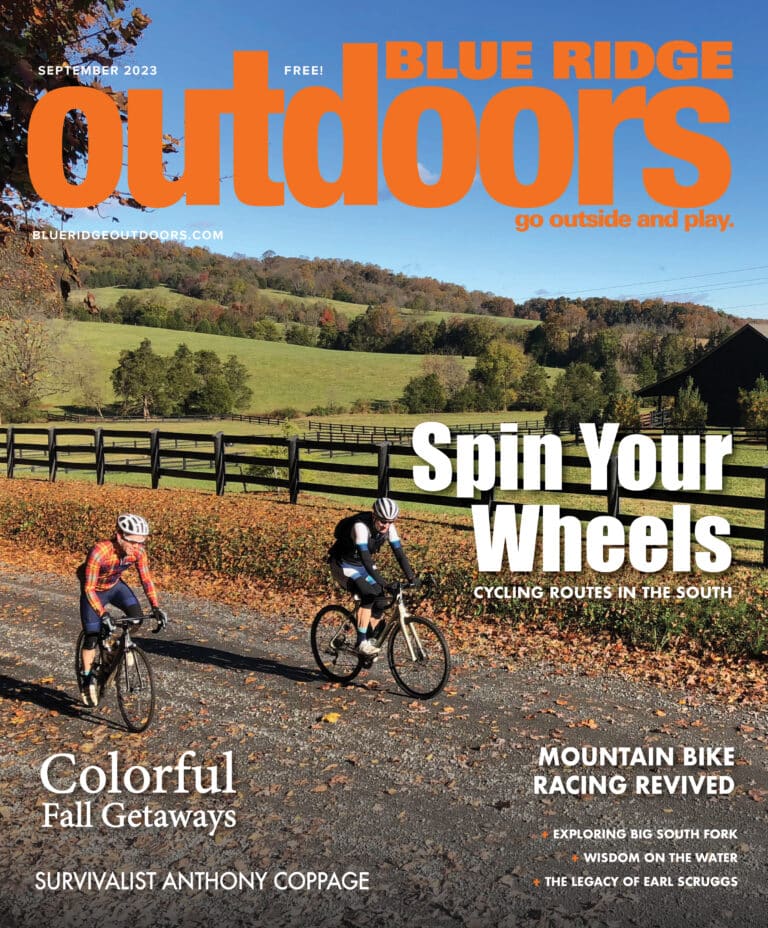 Three West Virginia Pastors Pedal Cross Country on a Bamboo Triplet
Three West Virginia Pastors Pedal Cross Country on a Bamboo Triplet
Last summer three Lutheran pastors from West Virginia decided to take their message out of the house of worship and on the road. Fred Soltow of Shepherdstown, David Twedt of Wardensville, and Ron Schlak of Charleston saddled up on a custom triple tandem Calfee bamboo road bike for a 3,000-mile ride that visited 65 different cities in 100 days. Described as “a spiritual journey in the campaign against world hunger,” the Tour de Revs hit all four corners of the country and even made it to Alaska (a sag support vehicle helped complete the itinerary), visiting fellow churches and communities to raise funds for the Evangelical Lutheran Church in America’s World Hunger program. Soltow shared thoughts on the purpose of the ride and getting used to a triplet.
What prompted the three of you to take this journey together?
We’ve known each other as pastors of the Lutheran Church in West Virginia for about 15 years, and we’re all cycling enthusiasts. In 2001 David rode to all the churches in West Virginia trying to raise money for bicycles for pastors in Madagascar. Then he decided that he would try to ride to all of the synods in the greater church and asked if we wanted to come along.
What were some of the challenges to riding the bamboo triplet?
I was the captain in the front seat the entire time; Ron was in the middle and David in the back. Until we got used to it, riding was a little harrowing. We had to trust each other’s balance. We had to mount and stop the bike together, because it’s too heavy for one person to hold up. On a bike that’s 10 feet long, we could feel each other’s slightest movements. Up front, I was always having to compensate when one of the others would do something as simple as turn a shoulder to look at a flower patch. Also, there was little time for reaction to a pothole or something in the road. I had to be looking ahead and planning.
 Any mechanical problems?
Any mechanical problems?
Most of the mechanical problems were rider error. With the weight and power of three people, if we missed a gear shift, something was going to break. We’d be pushing up hills and suddenly realize we needed to change gears. It meant a lot of bound or snapped chains at first. We only had one tire blowout.
In your cycling experience, how does a bamboo frame measure up?
It’s a great frame material. It weighed in at just 52 pounds. To compare, we came across a Litespeed triplet in Wisconsin that weighed 56. I usually ride a carbon frame, and I found the bamboo to be equal in stiffness. I also found the bamboo frame was better for absorbing vibrations. It was really fun to ride and handled well at speed. On a flat road we would settle in around 30 miles per hour and our top speed was around 50.
How did the trip measure up to initial expectations?
We put about 3,000 miles on the bicycle and averaged about 40 miles a day. We were hoping to do 80 a day, but the reason we didn’t ride more is because we ended up sharing the message more. It was all about helping people change their own lifestyles for the better and letting them know about how they can feed the people of the world. That was the real reason for the ride, so in doing less mileage I think we actually succeeded.
What particular moments stand out?
We were speaking at a homeless shelter, and a guy came up and gave us the only quarter he had. He said, “I’ve already had a hot meal. Maybe this quarter can help feed someone else today.” That gesture really spoke to our entire message. We all have enough stuff, and there is plenty to go around. If we all donated $5 a month or put in just an hour a week at a soup kitchen, it would make a difference and make a lot of lives a whole lot better.







